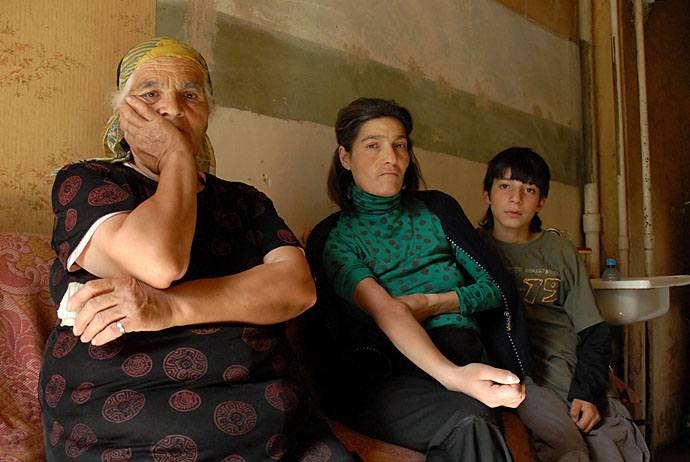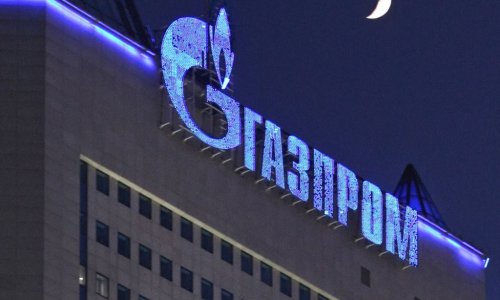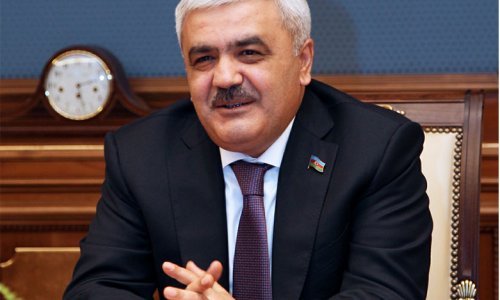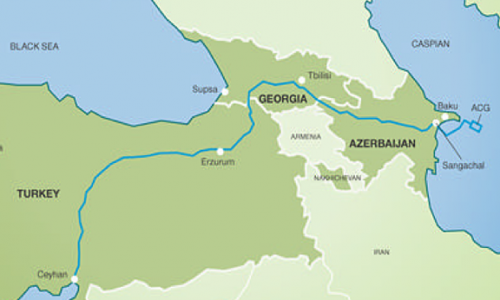Armenia is emerging from a currency slump triggered by the financial crisis in Russia and expects its economy to grow this year, Vice Prime Minister Vache Gabrielyan said.
"We are still in the turbulent zone, but we’re going to have growth,” Gabrielyan said in an Oct. 2 interview in the capital, Yerevan. "The impact from the Russian economy, particularly on remittances, is going to be felt still, but I think we have enough resilience to overcome this.”
Armenia, which relies heavily on money sent home by migrant workers in Russia, is alone among the former Soviet republics in seeing its currency, the dram, hold stable against the dollar this year, while larger neighbors Georgia and Azerbaijan have endured declines of 21 percent and 25 percent, respectively.
The dram plunged as much as 25 percent in December as sliding oil prices triggered a sharp devaluation in the the ruble, sending shock waves through Armenia. Remittances have declined 40 percent in dollar terms this year, according to Gabrielyan. Armenia’s central bank reacted by doubling the minimum reserve requirement in drams for lenders to 24 percent to reduce liquidity and stabilize the exchange rate in the south Caucasus republic of 3.1 million people. It later eased that to 20 percent.
"The regulator took the only decision it could to stop the panic in December, and it was the correct one,” David Sargsyan, chief financial officer of Ardshinbank, Armenia’s second-largest lender, said in an Oct. 1 interview. "The balance of payments is improving considerably, and this is removing pressure on the exchange rate.”
While Armenia joined the Russian-led Eurasian Economic Union in January, Russia’s share in the country’s trade fell from about 20 percent to 14 percent as exporters lost competitiveness following the ruble’s depreciation, said Gabrielyan, who is also minister for international economic integration and reforms. Businesses diversified trade in response, exporting more to China, now Armenia’s second-largest trade partner, and the Middle East.
"We have increased our exports to Iraq and other countries that were never on our map before,” and the lifting of international sanctions after the nuclear agreement with neighboring Iran may boost Armenia’s trade further, he said. Many Iranians already visit Yerevan because "they are partying here, and that’s very good.”
The dram’s "relative stability” compared with the currencies of Armenia’s main trading partners is due to the country’s "historically low inflation rates” and diversification of exports, central bank Deputy Chairman Nerses Yeritsyan said in an e-mailed statement. The latter development has "reduced Armenia’s economic vulnerability to adverse shocks coming out of any individual partner” and has supported "relatively steady growth of real volumes of exports.”
The loss of remittances, which account for 14 percent of Armenia’s gross domestic product, contributed toward a slide in imports that narrowed the trade deficit and eased pressure on the dram, said Sargsyan, who was finance minister for a year until April 2014. With Armenia’s inflation at 3.3 percent in September from a year ago, compared to 15.7 percent in Russia, Armenian exports are growing again as Russian companies lose their competitive advantage from the devaluation, he said.
Still, the market has been tough for many Armenian businesses. Sales to Russia fell 25 percent and income halved after the ruble’s decline, Karen Petrosyan, import-export manager at Euroterm CJSC, which sells fruit juice, preserves and vegetables under the Noyan brand, said in an interview. "We suffered a lot,” he said.
The International Monetary Fund raised its forecast for 2015 growth in Armenia to 2.5 percent in September, with the medium-term pace of GDP expansion seen at 3.5 percent, saying the dram is stabilizing and the currency faces fewer risks. The Washington-based lender cut its growth forecast to zero in April from 3.3 percent, as exports and remittances fell.
Many Armenians have yet to experience an increase in their income, Gabrielyan said.
"Ordinary people ask how come there’s growth and we don’t see it,” he said. "The decline in remittances means we have less spending, which has an effect on the rest of the economy, particularly the service sector, and this effect is going to continue.”
(Bloomberg)
(Bloomberg)
www.ann.az
Follow us !











